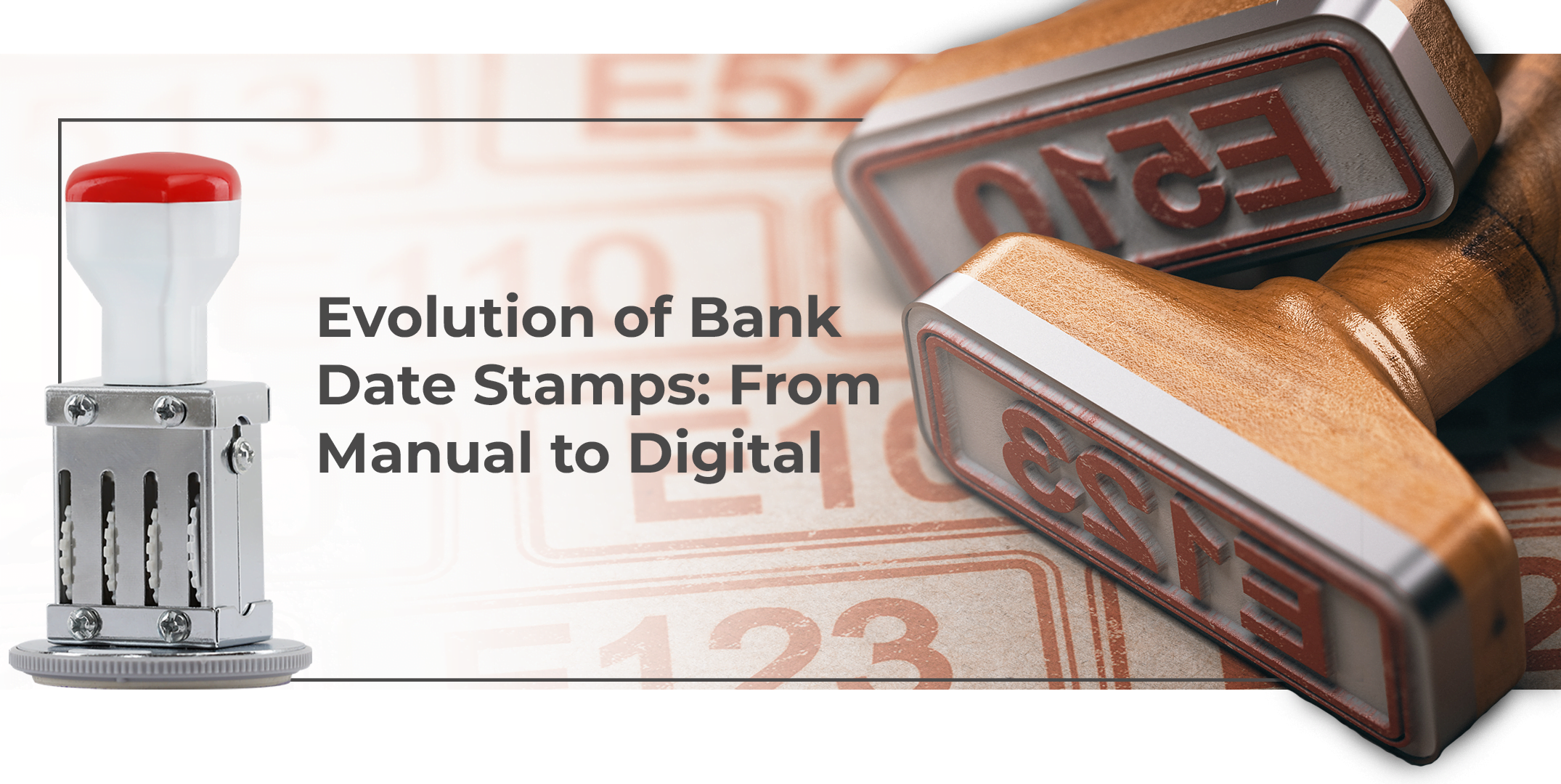The commonplace bank date stamp has long been associated with responsibility, precision, and record-keeping in the banking and financial industries. With the introduction of digital technology, these stamps, which were once a manual instrument used by bank tellers, have seen a remarkable metamorphosis. Now let’s explore the intriguing history of bank date stamps, from their manual beginnings to their digital evolution.
Manual Bank Date Stamps:
Once upon a time, bank transactions were painstakingly recorded by hand in ledger books. Each deposit, withdrawal, or transfer had to be meticulously documented to maintain accurate financial records. Manual bank date stamps played a pivotal role in this process, imprinting the date of the transaction on documents such as deposit slips, checks, and account ledgers. Bank tellers would manually adjust the date on the stamp each day, ensuring that transactions were properly dated and recorded.
The Rise of Automation:
As technology advanced, manual processes gave way to automation in the banking industry. In the latter half of the 20th century, mechanical date stamp machines began to replace their manual counterparts in many banking institutions. These machines were equipped with rotating date wheels that could be easily adjusted to display the current date. While still requiring manual input, these automated date stamps significantly expedited the transaction recording process and reduced the margin for human error.
Digital Revolution:
The true revolution in bank date stamp technology came with the advent of digitalization. As banks embraced computerization and electronic record-keeping systems, traditional date stamps were gradually phased out in favor of digital alternatives. Today, most banking transactions are conducted electronically, with dates and timestamps automatically recorded in digital databases. Physical bank date stamps have largely been replaced by digital timestamps generated by computer systems.
Benefits of Digital Bank Date Stamps:
The transition to digital bank date stamps has brought about numerous benefits for both banks and their customers. One of the most significant advantages is the enhanced accuracy and efficiency of transaction recording. Digital timestamps are automatically generated by computer systems, eliminating the risk of human error associated with manual date stamps. This ensures that transaction records are consistently accurate and up-to-date.
Digital bank date stamps also make it easier to integrate software and electronic banking systems together seamlessly. Back-office activities may be streamlined and administrative burden can be decreased by promptly recording, processing, and reconciling transactions. Additionally, customers gain from more convenient online or mobile banking app access to their account information as well as quicker transaction processing times..
Digital bank date stamps are essential for guaranteeing adherence to audit standards and regulatory obligations. Banks may exhibit accountability and transparency in their operations, which is crucial for risk management and regulatory compliance, by accurately timestamping each transaction.
Bank date stamps will probably become increasingly more entwined with digital innovation as long as technology keeps developing. Technological developments in artificial intelligence, blockchain, and data analytics have the potential to improve transaction recording accuracy, security, and efficiency in the banking industry. The demands of banks and their clients in the digital era will continue to be satisfied by digital bank date stamps, whether through biometric verification, real-time transaction tracking, or predictive analytics.
A key turning point in the development of financial technology has been reached with the transition from manual to digital date stamps. Bank date stamps have evolved significantly from their simple origins as manual instruments used by bank tellers to their present incarnation as digital timestamps produced by advanced computer systems. Banks that have embraced digitalization have improved transaction recording security, efficiency, and accuracy, opening the door for consumers to enjoy a more smooth banking experience in the digital era.


